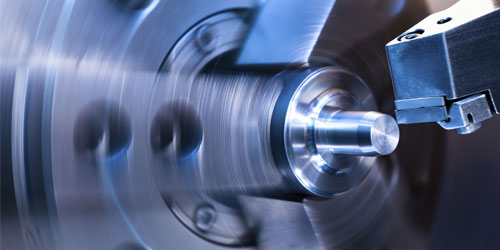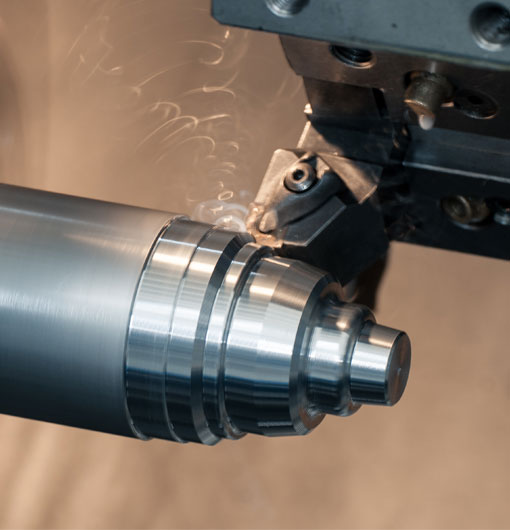Introduction
CNC (Computer Numerical Control) turning centers are essential tools in the world of manufacturing and prototyping. These machines can transform raw materials like metal, wood, or plastic into intricate parts with extreme precision. Central to the operation of CNC turning centers is a language called G-Code, which allows operators to control the machine's actions and movements. In this article, we will dive deep into understanding G-Code in the context of CNC turning centers and how optimizing this language can lead to increased efficiency and better results in your projects.
Understanding G-Code
G-Code is a programming language used to instruct CNC machines on how to perform cutting, drilling, milling, and other operations. It was first developed in the 1950s and has since become the standard language for CNC machinery automation.
In a CNC turning center, G-Code commands typically control the following:
Movement of the cutting tool (X, Y, and Z axes)
Tool selection and tool changes
Spindle speed and direction
Feed rate
Coolant flow
G-Code is usually written using a combination of alphanumeric characters, which represent specific instructions. For example, `G01` is a command used to indicate linear motion, while `G02` and `G03` are commands for clockwise and counterclockwise circular motions, respectively.
Reading G-Code
Understanding how to read and interpret G-Code is essential for optimizing CNC turning centers for better performance. Let's examine a simple G-Code example:
G00 G90 X20 Y20G01 G91 X-10 Y-10 F100
In this example:
`G00` is the rapid positioning command, which moves the machine to the specified coordinates as quickly as possible.
`G90` is the absolute programming mode, which means that `X20 Y20` represents the target coordinates in relation to the origin (0,0).
`G01` is the linear interpolation command, which moves the tool in a straight line between points.
`G91` is the incremental programming mode, which means that `X-10 Y-10` represents the target coordinates relative to the current position.
`F100` sets the feed rate to 100 units per minute.
Being able to read sequences like this will help you better understand the actions of the CNC turning center and make necessary adjustments to improve performance.
Optimizing G-Code
To make the most out of your CNC turning center, it's crucial to optimize the G-Code you use. Optimizing G-Code can save time, improve surface quality, and extend the life of your tools. Some tips for optimizing G-Code in CNC turning centers include:
1. Tweaking feed rates and spindle speeds:Adjusting these parameters can have a significant impact on the quality of your finished product and the time it takes to produce it.
2. Optimizing tool paths:Enhancing the paths that your tools follow can reduce wasted movement and minimize the time required to complete a given operation.
3. Utilizing canned cycles:Canned cycles are pre-programmed routines that can automate repetitive tasks and help save time in certain CNC turning center operations.
4. Implementing subroutines and macros:Subroutines and macros are code segments that can be run multiple times throughout a program, saving you the effort of typing out the same instructions over and over.
5. Using simulation software:Testing your G-Code with simulation software before running it on the machine can help identify potential issues and optimize tool paths.
Examples of G-Code Optimization
Let's explore some examples of G-Code optimization in CNC turning centers:
Example 1:
Original G-Code:G01 X1.0 Y1.0 F10G00 X0 Y0G01 Z-0.1G01 X1.0 Y1.0 F20G00 X0 Y0
Optimized G-Code:G00 X1.0 Y1.0G01 Z-0.1 F10G01 X0 Y0 F20G00 Z0.1
In this example, we have simplified the tool path by reducing unnecessary movements and using more efficient feed rates. Additionally, we've eliminated the redundant return commands.
Example 2:
Original G-Code:G00 X0 Y0M03 S2000G01 Z-0.1 F10G01 X10.0 Y10.0 F20G00 X0 Y0M05
Optimized G-Code:G00 X0 Y0M03 S3000G01 Z-0.1 F10G01 X10.0 Y10.0 F30G00 X0 Y0M05
In this example, we've increased the spindle speed and feed rate to improve efficiency. This change, however, may require operator verification to ensure it doesn*t cause any damage to the tool.
The Impact of G-Code Optimization on CNC Turning Centers
Optimizing G-Code for CNC turning centers can have a significant impact on the performance and efficiency of your operations. By following the optimization tips and techniques discussed in this article, you'll be able to make the most of your CNC turning center, improve the quality of your finished products, and potentially extend the life of your tools.
In the world of manufacturing and prototyping, mastering the use of G-Code will facilitate more efficient and cost-effective production, setting you apart from the competition.
cnc turning center g code













